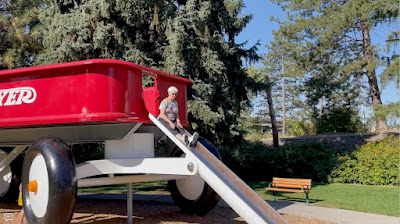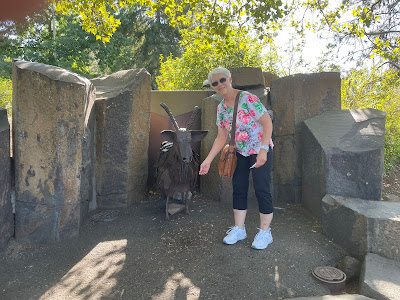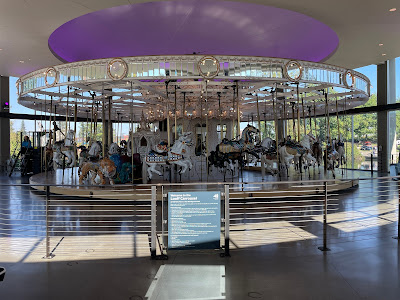Today was not a travel day but a sightseeing day. We returned to the Spokane Riverfront Park to pick up where we had left off the previous day. We still had some things to see and do.
We parked in the same lot as yesterday and walked across the former vehicle bridge that is now for pedestrians only. In the middle of the park area are two islands. The islands stretch from the upper part of Spokane Falls to the lower part.
One island was formerly called Canada Island. It was renamed in 2017 and now has the Salish name that translates as Salmon People (sn̓x méne pronounced “sin-HOO-men-huh”). It is a relatively small island and sits almost at the head of the upper falls.
The other island is Havermale Island. It served as a refuge for the citizens of Spokane during the battle with the Nez Perce Indians in 1877 and offered refuge to the citizens once again during the Great Fire of 1889. By the beginning of the 20th century, Havermale was developed as an industrial area. It was on this island that the Great Northern Railroad built their depot for Spokane (eastern part of the island) and Washington Water Power Company built their power generating station (western section).
As Spokane continued to grow, the island, due to size, became less attractive to industries and many moved from the island. By the 1950s, the rail yards on Haverhale and the southern banks of the Spokane River were slowly being vacated. An impetus to renovate the island came in the early 1970’s as the city prepared to host the Expo. Only the Pavilion, the Gondolas, and the Clock Tower remain from Expo. The Looff Carrousel was relocated to the park in 1975 from Natatorium Park, a historic amusement park that closed in the 1960s.
On our morning visit we circled around to The Childhood Express, a 12-foot-high and 27-foot-long Radio Flyer wagon with a slide for the handle. Martha got a few strange looks from kids on the slide as she climbed the ladder to go down the slide.
From the slide, we made our way to the garbage coat (designed for the World’s Fair (Expo ’74) as an environmental statement. The goat eats small pieces of garbage with the aid of a vacuum that sucks trash into the digestive system.
A visit to the Visitor Center was next while waiting for the Looff Caroussel to open at 11 o'clock. Outside the Visitor Center is the Rotary Fountain, completed in 2004 and refurbished in 2016. It serves as an ideal splash pad for children during the summer months.
When the Caroussel opened, we bought tickets so we could both ride. This particular carousel (of which there were three spellings for the word when it was built in 1909) is rather fast compared to others we have ridden. The ride features 54 horses, one giraffe, one tiger, and two Chinese dragon chairs. They were all hand-carved by one individual over nearly two years.






No comments:
Post a Comment